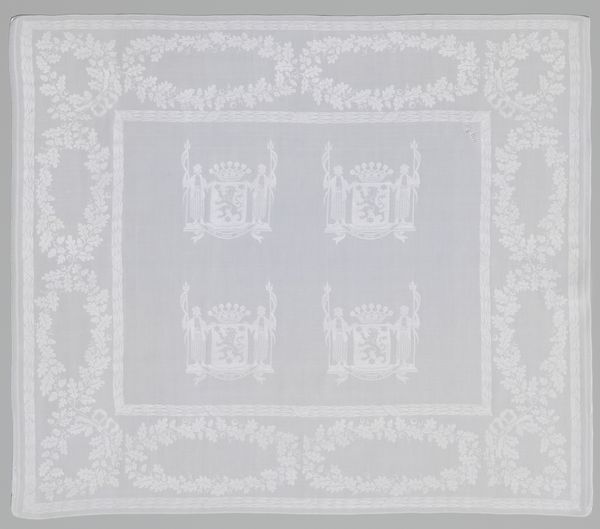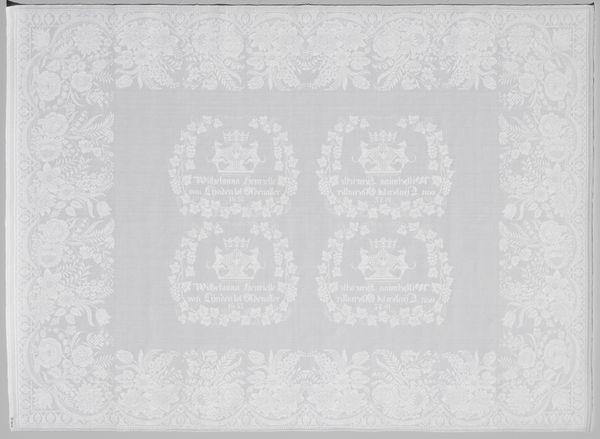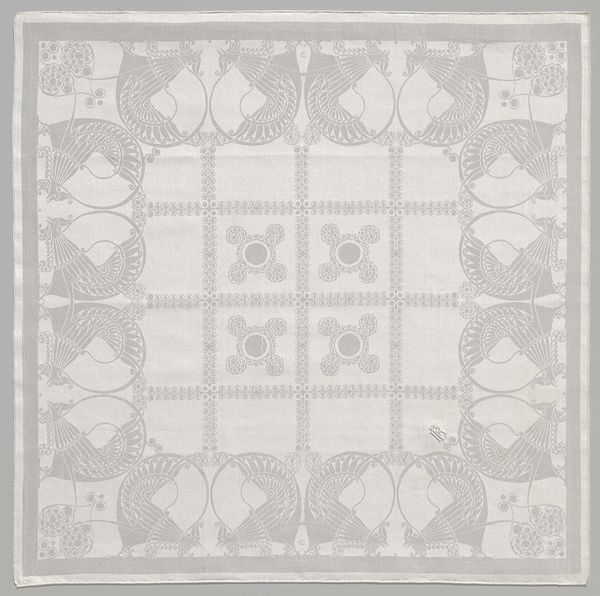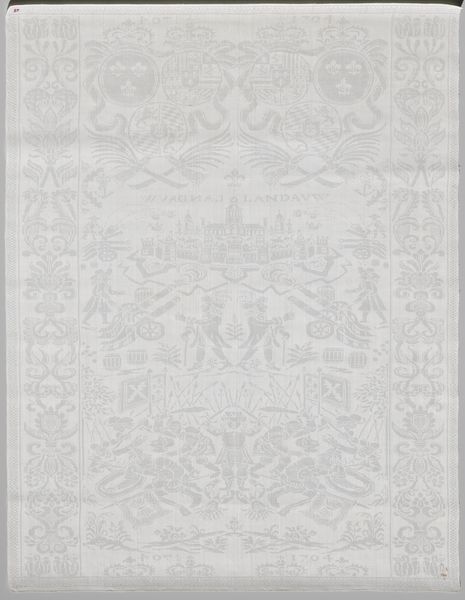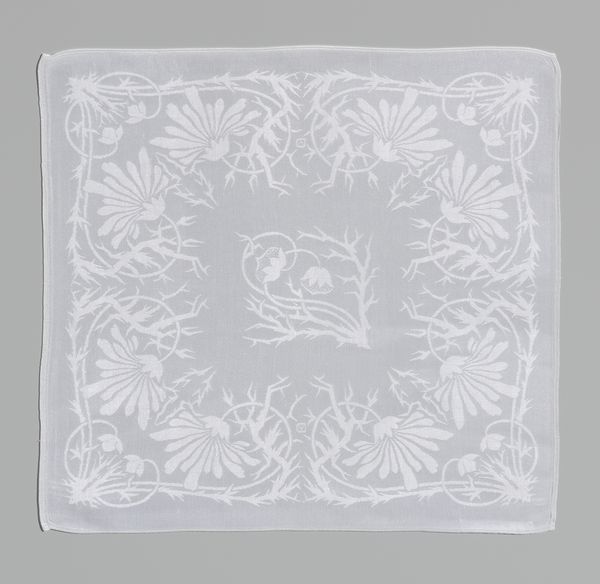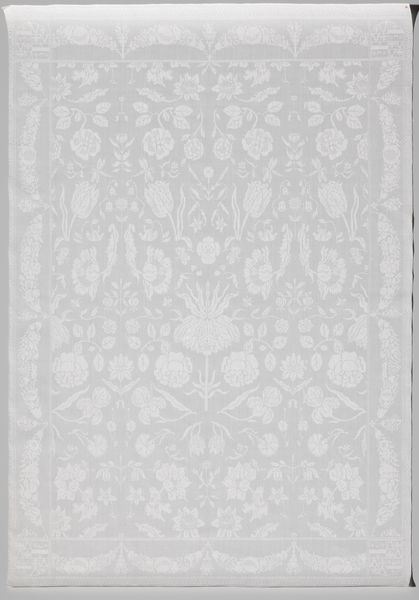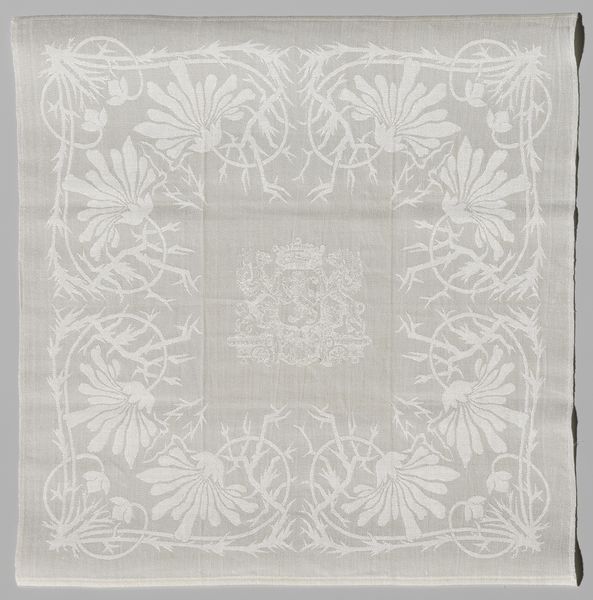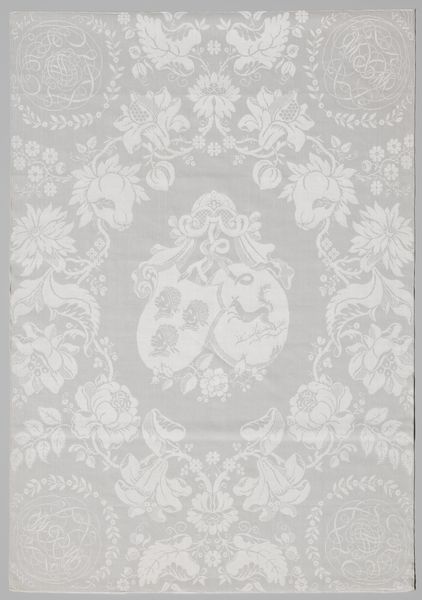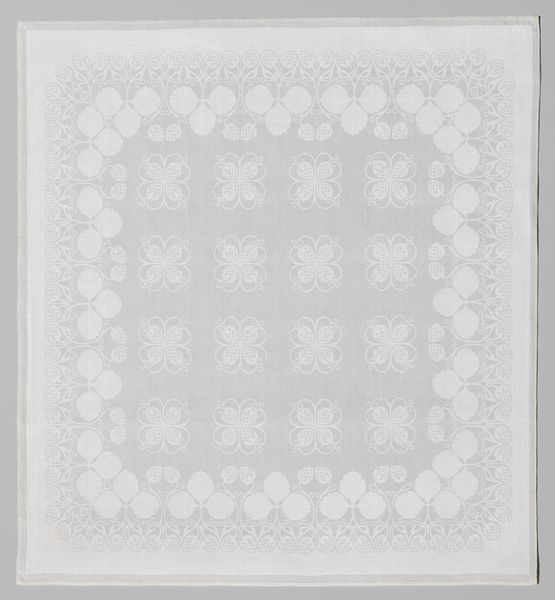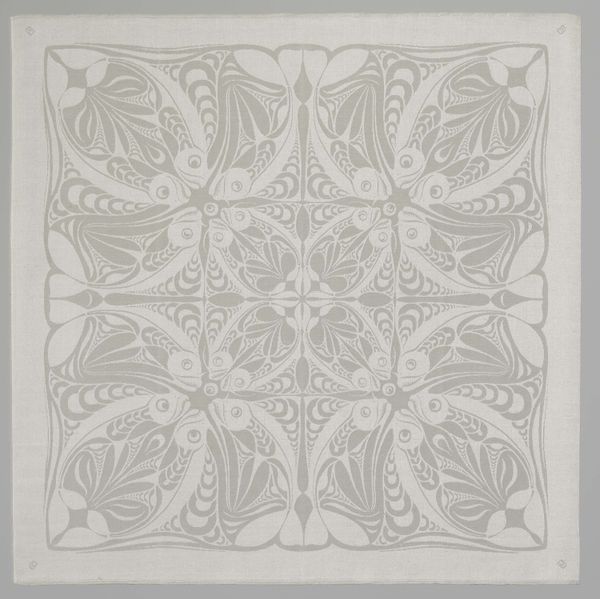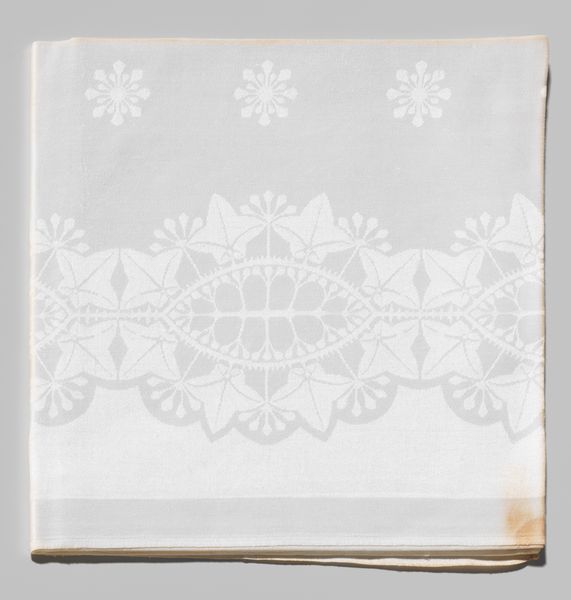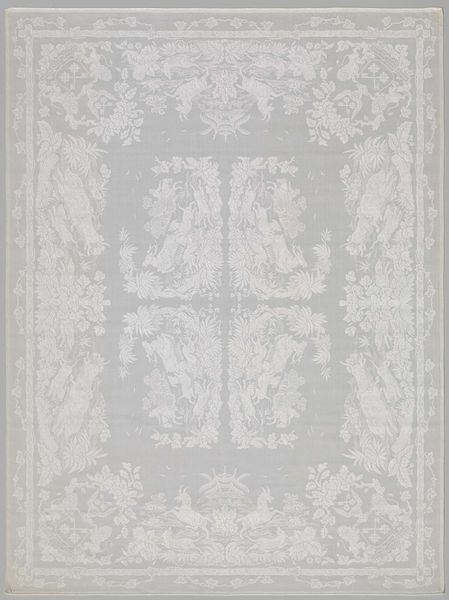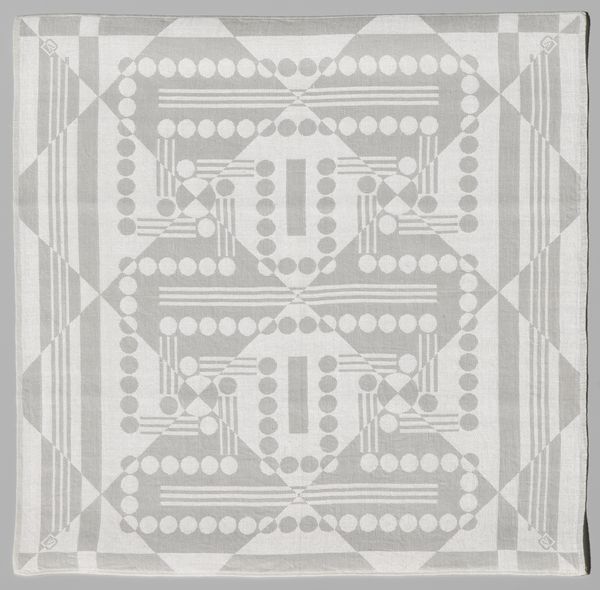
Servet van linnendamast met wapens van Limburg Stirum en van Tuyll van Serooskerken 1890 - 1910
0:00
0:00
weaving, textile
#
natural stone pattern
#
weaving
#
textile
#
pattern design
#
organic pattern
#
repetition of pattern
#
vertical pattern
#
pattern repetition
#
textile design
#
decorative-art
#
imprinted textile
#
layered pattern
#
combined pattern
Dimensions: height 102.5 cm, width 87.7 cm
Copyright: Rijks Museum: Open Domain
Editor: This linen damask dates between 1890 and 1910 and was crafted by the Rath Brothers. It’s just stunning. So intricate and delicate. I’m particularly struck by the repeated coats of arms and the surrounding botanical motifs. How can we interpret such an object, what stands out to you? Curator: Considering this piece through a materialist lens, the key is its construction: woven linen. Damask weaving allowed for these complex patterns. The choice of linen is crucial; it speaks to a specific social class and its access to luxury goods, but also the labor required for cultivation and processing flax. Editor: So the material itself tells a story. Curator: Absolutely. We need to think about where this linen was produced. Was it local, or was it imported? How did the availability and cost of materials influence its production and, subsequently, its consumption? Who wove it? The labor conditions and social context of textile workers during that time are paramount. Editor: It's amazing how much a simple textile can reveal about its time! Curator: The coats of arms tell us who likely commissioned or owned the piece. It elevates its potential monetary and social value beyond simple craft. Who used the object and on what occasions, also, can indicate social practice. We can examine if and how high art attempted to elevate or separate itself from such craft work at the time, perhaps by examining critical reviews of similar items at design shows. Editor: That makes so much sense. By considering its materiality, production, and consumption, we get a more comprehensive view of its role in society. Curator: Exactly. Thinking materially forces us to reconsider what we value as ‘art’ and whose stories are deemed important.
Comments
No comments
Be the first to comment and join the conversation on the ultimate creative platform.
